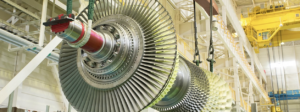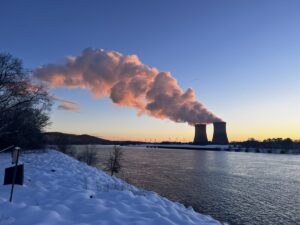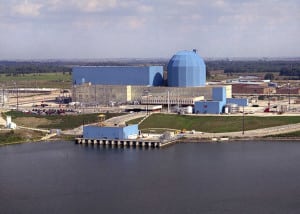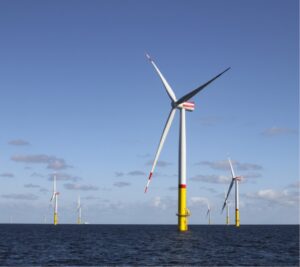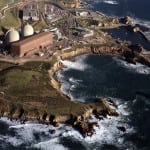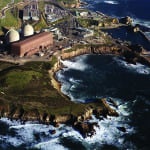The 2018 agreement to close the Diablo Canyon nuclear plant by 2025 is being undermined by California Gov. Gavin Newsom, Sen. Dianne Feinstein, and the pro-nuclear community. They falsely claim the energy produced by Diablo, located on the state’s central coast in San Luis Obispo County, is needed to prevent future power outages and meet 2030 climate goals.
Newsom is gunning for a portion of the $6 billion from the Department of Energy’s (DOE’s) Civil Nuclear Credit program (CNC), which was created by the bipartisan Infrastructure Investment and Jobs Act (IIJA) to mitigate potential increases in greenhouse gas emissions due to the closure of unprofitable atomic reactors that operate in competitive electricity markets. However, Diablo is not eligible for funds because it does not meet the basic requirements of the IIJA, nor those of the CNC guidance. It would violate the intent of the law.
COMMENTARY
Not only does Diablo fail to qualify for this subsidy, the reality is California does not need Diablo to ensure sufficient energy to prevent power outages or to meet climate goals. Diablo Canyon must shut permanently at the end of its current licenses by 2025. In support of this position, more than 170 national and California organizations signed a letter to U.S. Energy Secretary Jennifer Granholm opposing the misuse of the CNC to subsidize Diablo’s continued operation.
The “Joint Proposal for the Orderly Replacement of Diablo Canyon Power Plant with Energy Efficiency and Renewables” was reached on June 21, 2016, by Diablo’s owner, Pacific Gas & Electric (PG&E), and other groups, including the International Brotherhood of Electrical Workers Local 1245, the Natural Resources Defense Council, and the Alliance for Nuclear Responsibility. Newsom helped negotiate the deal, making his reversal all the more confounding. But PG&E must apply for the massive taxpayer-funded CNC bailout, not the governor. Time will tell whether PG&E will cave on its hard-won deal, which thoughtfully addressed climate and environmental justice issues, as well as economic and power supply concerns. Failure to uphold this agreement prolongs the health and safety risks to millions of Californians.
This plant is old and sits near a web of earthquake faults. When Diablo was initially constructed, the Nuclear Regulatory Commission (NRC) stipulated that a nuclear plant could not be built within 30 kilometers of an active earthquake fault. After much drama and litigation, Diablo was allowed to operate. Since then, new faults were discovered—one a mere 600 meters from the plant. All are connected, raising the possibility of a joint rupture that could cause more ground motion than the plant was designed to withstand.
Earthquake faults and radiation are a poor combination. Each of Diablo’s two reactors contains 1,000 times as much radioactivity as the atomic bomb dropped on Hiroshima, and the spent fuel pools contain 10 times more than that. If a major earthquake disrupted the cooling system, the resulting release could contaminate a large portion of California and render it uninhabitable for generations. For this reason alone, Diablo must shut as soon as possible.
Without energy production from Diablo, California’s energy supply would in fact be more resilient. The California Public Utilities Commission (CPUC) Decision 18-01-022 on Jan. 11, 2018, approving retirement of Diablo Canyon, states, “PG&E’s conclusion is that there is simply less of a need for Diablo Canyon … in fact, PG&E believes that the continued operation of Diablo Canyon beyond 2025 would exacerbate over-generation, requiring curtailment of renewable generation… PG&E’s analysis indicates that there is no need to replace Diablo Canyon in order to maintain system reliability.”
According to energy policy consultant Robert Freehling, improved energy efficiency will replace Diablo’s output every three years. Residential rooftop solar currently generates 12,000 MW per year, with more added yearly. “How many times do we have to replace Diablo Canyon before we, as a state, acknowledge that we’ve actually replaced it?” asked Freehling in a recent news conference. “10, 20, 30 times? We’ve already replaced it many times.”
Battery storage is essential to ensuring sufficient energy for the state. The California Independent System Operator (CAISO) recently added 3,000 MW of storage, which compares to Diablo’s output of 2,200 MW. An additional 700 MW is planned soon.
Closing Diablo would also cease the daily damage to marine life caused by Diablo’s (now unlawful) once-through-cooling system. For nearly four decades, 2.5 billion gallons of water have been sucked into the plant each day. It has then been pumped back into the Pacific Ocean 19F warmer. This process kills enormous amounts of aquatic life, altering the marine environment of Diablo Cove, making it uninhabitable for many native species. The California Coastal Commission declared, “It would be fair to categorize Diablo Canyon as California’s largest marine predator.”
Bailing out old, dirty, dangerous, and expensive nuclear plants does not spark the energy transition needed to save the climate, create good jobs, build a strong economy, and advance environmental justice.
—Kevin Kamps serves as Beyond Nuclear’s radioactive waste specialist. Jane Swanson is a spokesperson for San Luis Obispo Mothers for Peace. This article is one of two posts in POWER’s Point-Counterpoint series. The views and opinions expressed within the content are those of the author(s) and do not necessarily reflect the views and opinions of POWER or any of its affiliates. To read the opposing viewpoint, please see: “Even California’s Governor Realizes Nuclear Power is Key to a Clean Energy Future.”



